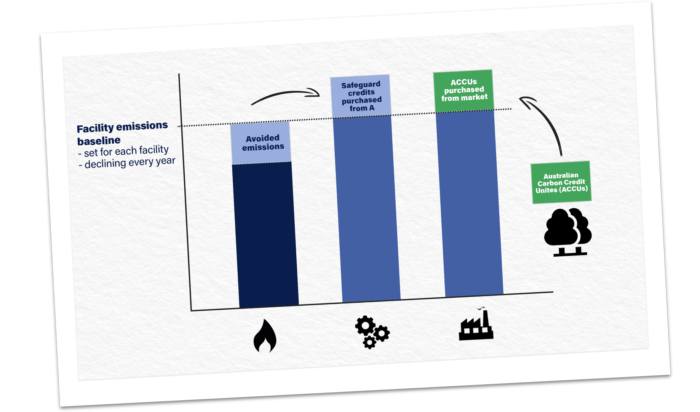What does the Safeguard Mechanism mean for my workplace?
On 30 March 2023, the Australian Government took an important step to protecting jobs in Australia’s heavy industries during the energy transition, as the Safeguard Mechanism (Crediting) Amendment Bill 2023 passed the Federal Parliament.
The new legislation will mean that between now and 2030, Australia’s biggest industrial facilities will be required to reduce their emissions, by buying new equipment, developing new technology, finding alternative processes or buying carbon credits.
Known as the Safeguard Mechanism, the new changes will have significant consequences for 160 AWU industrial sites, across steel, aluminium, cement, glass, plastic, chemicals, foods and oil and gas.
AWU ³Ô¹ÏÍøÕ¾ Secretary Daniel Walton said that the new Safeguard Mechanism will provide security and confidence to workers in impacted industries.
“Under the Coalition, Australia had no climate policy and our members had no certainty about whether their jobs would be protected through the energy transition,” Mr Walton said.
“But the Safeguard Mechanism reforms will reward Australia’s heavy industries for their efforts to reduce emissions, and ensure that our manufacturing and resources sectors have a bright future through the energy transition.”
We’ve put together this explainer to help you understand the impact that the Safeguard Mechanism could have at your workplace, and find out if your workplace is affected.
What do I need to know?
Under the Safeguard Mechanism industrial facilities with emissions of more than 100,000 tonnes of CO2 or equivalent (CO2e) will collectively be required to reduce their emissions by approximately 28 per cent from their 2020-21 levels.
From July 1 2023, all covered facilities will need to reduce their emissions between now and 2030. To do this, facilities will need to buy new equipment, develop new technology, find alternative processes or buy carbon credits.
Each facility will have a different requirement, but the starting point is that each site reduces emissions by 4.9% per year.
Facilities that reduce their emissions more quickly than expected can sell Safeguard Mechanism Credits to facilities that exceed their emissions caps.
Facilities that exceed their limits will need to buy either credits from other facilities, or Australian Carbon Credit Units (ACCUs) – from the planting of trees and other actions that take CO2 out of the atmosphere – to offset their emissions.

Will my workplace be affected by the Safeguard Mechanism reforms?
You can check to see if your workplace is covered by the Safeguard Mechanism here.
What does this mean for my industry?
For the workers in the heavy industrial sectors that the AWU represents the safeguard mechanism will mean the following:
- Manufacturing: emissions-intensive trade-exposed manufacturing facilities will only need to reduce emissions between 1 and 2 per cent per year, compared to the standard 4.9 per cent per year.
- Gas: expansions of gas projects and new projects that ‘backfill’ existing LNG facilities will be expected to have zero net emissions. This means that all Scope 1 emissions will need to be offset from day 1 of these projects.
- Forestry and agriculture: significant opportunities will become available for new and expanded carbon offset projects.
What if my industry can’t reduce their emissions immediately?
Many of the AWU’s sites have ‘hard to abate’ emissions. Steel, for example, relies on coal in the manufacturing process. Cement also produces carbon emissions as a result of its manufacturing process. Technology is constantly improving, but there are not overnight solutions to reduce these emissions. Because of this, not every site will need to strictly reduce their on-site emissions year-on-year to meet their Safeguard obligations.
Instead, they can:
- purchase credits
- borrow credits from future years
- have their emissions counted over longer period, up to 5 years. The facility will need to demonstrate a firm and credible plan to reduce emissions before the end of the 5 year period. They can then ‘catch up’ on their expected yearly cuts over this time.
- qualify as an emissions-intensive trade-exposed (EITE) business and receive a lower emissions target.
View this post on Instagram
Where do I go to find out what the Safeguard Mechanism reforms will mean for my site?








